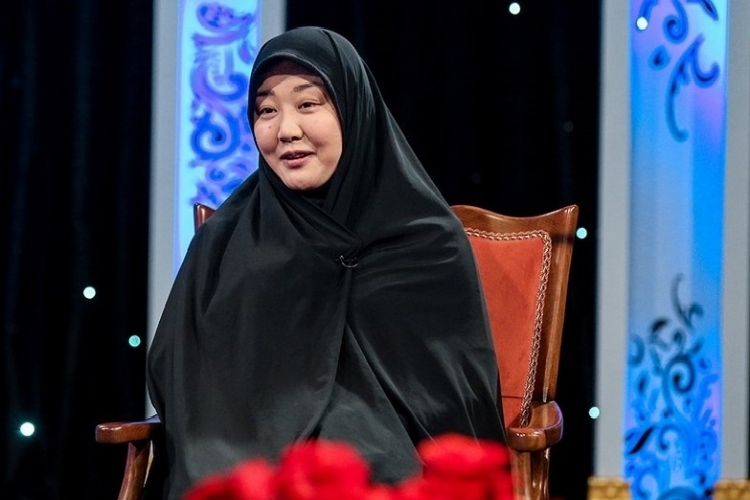AhlulBayt News Agency (ABNA): Fatima Atsuko Hoshino, a Japanese convert to Islam, shared her profound spiritual journey, from growing up in a predominantly Shinto and Buddhist culture in Japan to embracing Islam and relocating to Iran.
Hoshino’s path was marked by deep reflection and a search for answers to questions about life’s purpose, eventually leading her to convert to Islam, a faith she had initially only heard about through media portrayals. Speaking in a meeting with a host of students at Ahvaz Jundishapur University of Medical Sciences on Tuesday, Hoshino provided insights from her journey.
Hoshino, who first encountered Islam 19 years ago, described her journey as one of self-discovery, driven by a desire to understand her place in the world. “I was born into a family of five in Japan, where Shinto, Buddhism, and some Christianity are the dominant beliefs,” she said. “Japan has about 22,000 Muslims, but 80% of them are not ethnically Japanese, and most follow Sunni Islam.”
Raised in an environment where religious affiliation could be dual—many Japanese practice both Shinto and Buddhism—Hoshino grew up with a sense of spiritual curiosity.
“I had questions about the world, about where I came from and where I was headed. I felt like everything inside and outside of me was constantly moving, like we are all travelers, yet I didn’t know my destination,” she explained.
Though she distracted herself with social activities, she continued searching for deeper meaning.
Her perspective on Islam began to change after the events of September 11 and subsequent Quran burnings drew her attention. “I noticed that a lot of effort was being put into opposing Islam. I wondered why Islam faced so much resistance. What did it have that other religions didn’t?”
This led her to start researching the faith. What she discovered surprised her. “The Islam I read about was entirely different from the Islam portrayed in the media. Far from being a religion of war, it was deeply peaceful. I was amazed to learn that Muslims honor all previous prophets, and they greet each other with ‘Salam,’ a word that is both a greeting and a prayer for peace.”
Hoshino found other aspects of Islam particularly meaningful, such as its respect for women and emphasis on knowledge and understanding.
“I had heard that Islam does not respect women, but I found the opposite to be true. Islam holds that daughters are ‘doors to paradise,’ and that a wife completes her husband’s faith. In Buddhism, women are often seen as impure and are not allowed in sacred spaces, while Islam honors women’s roles. It was beautiful to see that in Islam, merit is not determined by gender or skin color,” she remarked.
Over time, Hoshino developed a profound connection to the Quran, especially after a spiritual experience with Surah Ya-Sin. “While reading the Surah, I felt surrounded by light and heard an inner voice telling me, ‘Do not worry, come toward us.’ It was as if God was speaking directly to me,” she recounted.
This experience ultimately led her to convert, and she took on the name Fatima, after the daughter of Prophet Muhammad (PBUH), as a sign of her connection to the Ahl al-Bayt (AS).
Hoshino also discussed the challenges she faced after converting to Islam, including isolation from her family and adapting to new lifestyle choices, such as wearing a hijab and finding halal food. “When I became Muslim, my family cut ties with me. I felt alone, but I consoled myself, thinking the Prophet (PBUH) would father me now,” she said, explaining how she found strength in her new faith.
She stayed in Japan for six years after converting, determined to show her family the positive changes in her life through her behavior. Eventually, her family acknowledged the transformation.
“They told me I had changed for the better. They didn’t agree with my choice, but they stopped opposing it when they saw the respect and patience I showed them.”
Hoshino’s search for a community led her to relocate to Iran, a country she saw as a center of spirituality and knowledge, and where Shia Islam is widely practiced. “I felt Iran was the best choice, as it’s a place of great scientific and spiritual opportunity. I wanted to be somewhere that nurtured these qualities.”
Despite the challenges of being a Muslim in Japan, Hoshino finds peace in her decision, especially in practices like hijab, which she views as a means of choosing whom she reveals herself to.
“Some freedoms infringe on others,” she said. “In hijab, I feel a greater sense of inner freedom. I have the choice of who sees me and who doesn’t. To me, the best freedom is in servitude to God, and true freedom lies not in this world, but in paradise.”
....................
End/ 257

